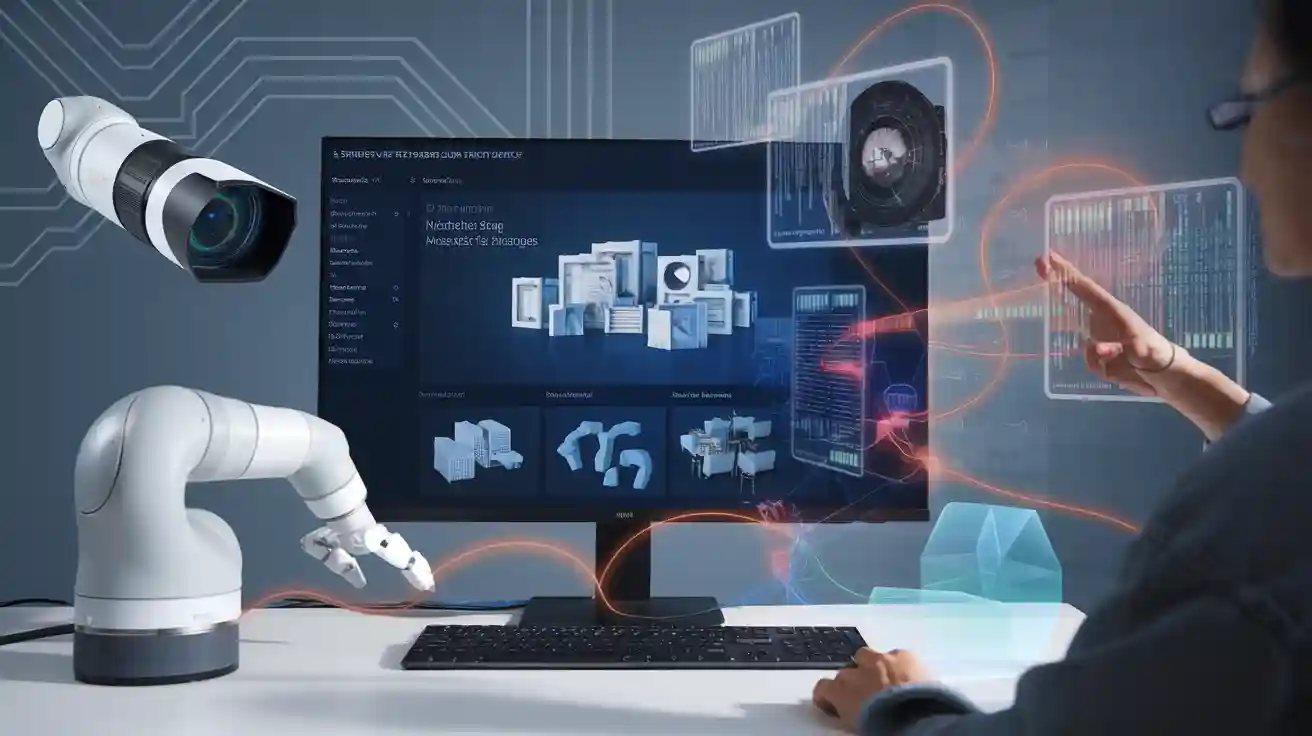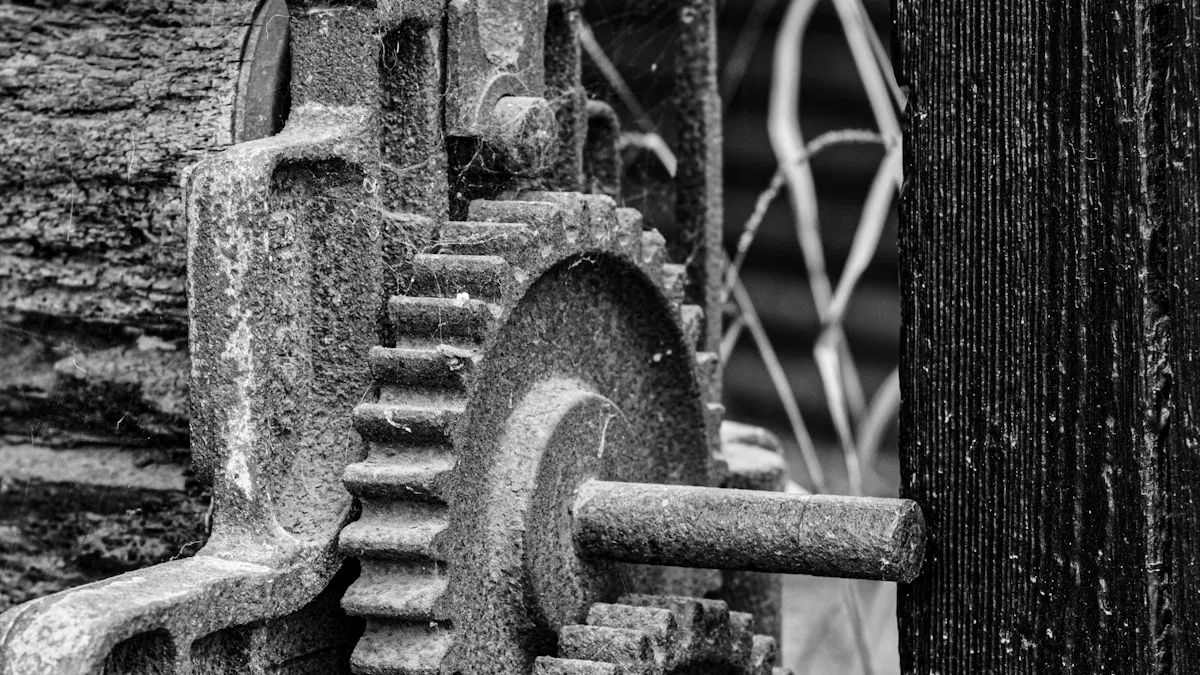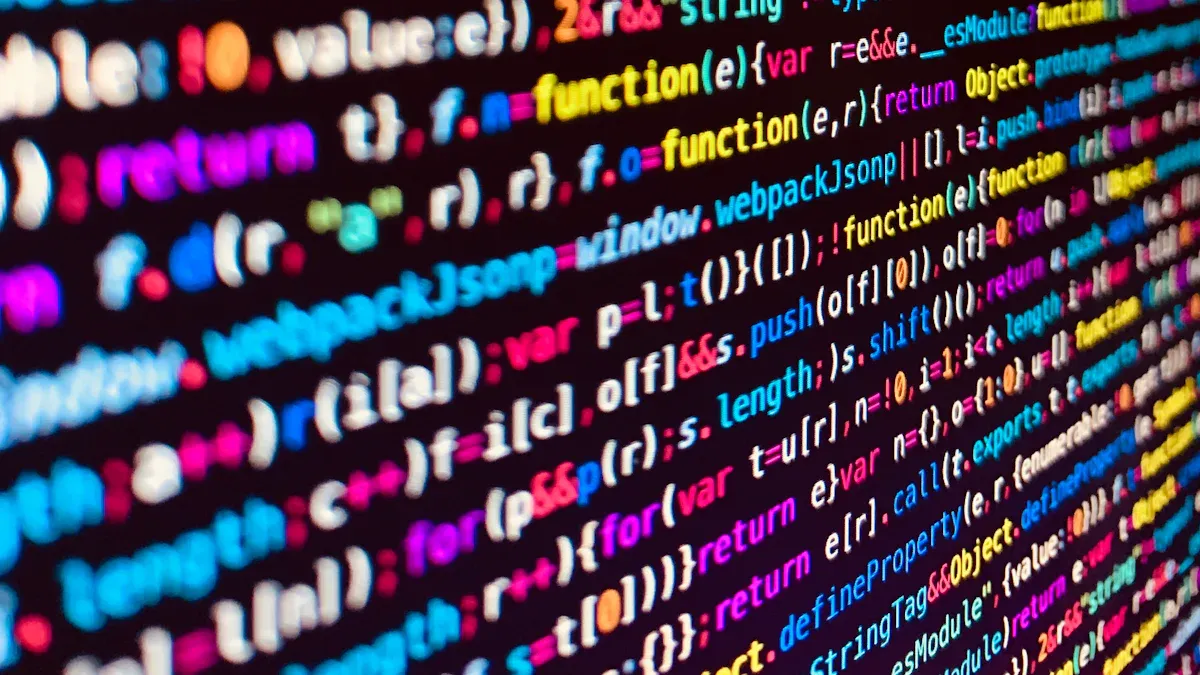
An artifact registry machine vision system in 2025 combines advanced artifact registry tools with intelligent image analysis. Companies now rely on artifact registry platforms for secure artifact management and version control. Google Cloud Artifact Registry stands out in artifact management, supporting rapid development and streamlined model management. Many industries integrate artifact registry solutions into their machine vision pipelines to meet real-world needs. For example:
- Manufacturers track visual inspection models with artifact registry.
- Healthcare providers depend on artifact registry for medical image workflows.
This approach helps organizations manage development and deployment efficiently.
Key Takeaways
- Artifact registry machine vision systems combine secure artifact storage with intelligent image analysis to manage AI models efficiently.
- Model versioning and automation improve reliability, speed, and collaboration in developing and deploying machine vision solutions.
- Strong security features protect sensitive models and data, helping organizations meet compliance and reduce risks.
- Integration of artifact registries with machine vision pipelines enables faster updates, higher accuracy, and scalable operations.
- Future innovations will enhance integration, auditability, and security, helping teams stay competitive and adapt to new standards.
Artifact Registry Machine Vision System
What It Is
An artifact registry machine vision system in 2025 represents a fusion of two critical technologies. The artifact registry stores, organizes, and secures digital assets such as machine learning models, datasets, and code packages. Machine vision systems analyze images and video to extract meaningful information. Together, these systems create a unified platform for managing and deploying visual AI solutions.
Google Cloud Artifact Registry serves as a leading example of modern artifact management. It provides robust storage, version control, and security for artifacts. Teams use the artifact registry to track every version of a machine learning model registry. This process ensures that each model used in a machine vision pipeline remains traceable and reproducible.
The artifact registry machine vision system supports multiple artifact types. It handles container images, Python packages, and custom machine learning models. This flexibility allows organizations to manage all components of their visual AI workflows in one place. The artifact registry also integrates with continuous integration and deployment tools, which streamlines the release of new models and updates.
Note: A well-structured artifact registry reduces the risk of deploying outdated or untested models. It also simplifies compliance with industry regulations.
Why It Matters
The artifact registry machine vision system plays a vital role in 2025. Organizations face growing demands for secure, efficient, and scalable AI solutions. The artifact registry addresses these needs by providing a central hub for artifact management. It enables teams to store, share, and audit every asset involved in machine vision projects.
A machine learning model registry within the artifact registry ensures that each model version is documented and accessible. This transparency supports collaboration between data scientists, engineers, and operations teams. It also helps organizations meet strict audit and security requirements.
Artifact management becomes even more important as machine vision systems expand into new industries. Healthcare providers rely on artifact registry to manage sensitive medical image models. Manufacturers use artifact registry to track inspection models across production lines. Logistics companies depend on artifact registry to deploy and update visual tracking systems.
The connection between artifact registries and machine vision systems drives innovation. Teams can automate model deployment, monitor performance, and roll back to previous versions if needed. The artifact registry machine vision system supports rapid development cycles and reduces operational risks.
Tip: Organizations that invest in a robust artifact registry machine vision system gain a competitive edge. They deliver reliable AI solutions faster and with greater confidence.
Core Components

Artifact Registry
An artifact registry forms the backbone of any modern machine vision system. It acts as a central repository for software artifacts, including model artifacts, datasets, and code packages. Teams use the artifact registry to store, organize, and secure every version of their model artifacts. This approach supports a robust development workflow, allowing engineers to track changes and maintain a clear machine learning model registry. The artifact registry enables seamless artifact discovery and simplifies the search for artifacts across projects. Security features, such as access controls and vulnerability scanning, protect sensitive software artifacts. The repository supports multiple package formats, making it adaptable to diverse development needs. By maintaining a central repository, organizations ensure that every software artifact remains accessible and auditable throughout the development lifecycle.
Machine Vision
Machine vision systems analyze images and video to extract valuable information. These systems rely on model artifacts stored in the artifact registry to perform tasks like object detection, classification, and quality control. A modular framework supports multiple camera inputs and flexible processing pipelines. Key features include semi-automatic labeling, deep learning-based object detection, and data-centric AI principles. The experiment management system tracks each experiment, ensuring reproducibility and transparency. Machine vision frameworks address quality factors such as visual flawlessness and informational correctness. They also support domain adaptation and multi-spectral imaging, making them suitable for complex industrial applications. The repository of model artifacts enables rapid development and deployment of new solutions.
Note: A well-designed experiment management system ensures that every step in the development workflow is documented and repeatable.
Integration
Integration connects the artifact registry and machine vision components, creating an automated development workflow. Teams link the experiment management system with the artifact registry to streamline model versioning and deployment. Automated pipelines pull model artifacts from the repository and deploy them into production environments. Workflow automation improves accuracy, reduces error rates, and increases throughput. For example, automated inspection systems can achieve 96.1% accuracy and inspect one part every two seconds. Real-time integration metrics, such as throughput and availability, ensure reliable operation. Continuous updates to model artifacts support ongoing development and scalability. Integration with the artifact registry allows organizations to manage software artifacts efficiently, supporting rapid innovation and cost-effective operations.
| Metric / Case Study | Description | Quantitative Evidence | Impact on Machine Vision Pipelines |
|---|---|---|---|
| Accuracy Improvement | ResNet-50 model in defect detection | 96.1% accuracy | Reliable and consistent performance |
| Error Rate Reduction | AI-driven vs manual inspection | <1% error rate vs ~10% manual | Reduces manual errors, improves reliability |
| Throughput | Inspection speed example | One part every 2 seconds | Enables high-speed, scalable inspection |
| Lifecycle Updates | Model and pipeline improvements | Reduced latency, increased throughput | Supports continuous improvement and scalability |
Key Features
Model Versioning
Model versioning stands at the core of reliable machine vision systems. Teams use model versioning to track every change in their machine learning models. This process supports model governance and ensures that each model version is easy to find and compare. Recent studies show that model versioning improves correctness on medium and high-difficulty tasks. As teams release new versions, they see fewer avoidance behaviors but sometimes more incorrect answers. These trends highlight the importance of careful model tracking and validation. Model versioning also supports reproducibility. Open access to data and code allows teams to check results and confirm performance changes. Model versioning helps teams manage the model lifecycle and maintain a strong development workflow.
- Benchmarks compare large language models across tasks, showing how model versioning affects correctness and reliability.
- Newer versions improve performance on harder tasks but may introduce new errors.
- Teams use numerical data to track reliability changes across model versions.
- Human difficulty metrics help predict model performance as versions evolve.
- Open data and code support reproducibility and further validation.
- Detailed figures and tables show how model versioning impacts performance trends.
Security
Security features in an artifact registry protect machine vision assets from threats. Teams use security scanning to detect vulnerabilities in containers and packages. Automated threat detection works ten times faster than older methods. Security scanning reduces the number of incidents and lowers the risk of critical vulnerabilities. Audit tools help teams meet standards like CIS and NIST. These features improve compliance and reduce false positives, making alerts more useful. Security tools also shorten the time to fix problems and reduce the exposure window for threats. The table below shows key benefits and improvements:
| Benefit/Improvement | Quantified Metric / Description |
|---|---|
| Threat Detection Speed | 10X faster threat detection and remediation compared to traditional methods |
| Security Incident Reduction | Fewer container-related vulnerabilities exploited or escalated after implementing scanning |
| Time to Remediation (TTR) | Reduced time from vulnerability discovery to remediation |
| Risk Reduction | Fewer critical CVEs in production environments |
| Compliance Success | Higher audit success rates and better adherence to standards |
| False Positive Reduction | Lower noise in alerts, improving focus and efficiency |
| Development Velocity | Faster release cycles, fewer hotfixes, less downtime |
| Operational Efficiency | Automated fixes and CI/CD integration reduce manual work and speed up deployments |
| Exposure Window | Smaller exposure window due to real-time notifications and automated prioritization |
Automation
Automation drives efficiency in the development workflow for machine vision. Automated pipelines deploy models faster and with fewer errors. Industry benchmarks, such as DORA metrics, help teams measure the impact of automation. These metrics include deployment frequency, lead time for change, time to recovery, and change failure rate. Teams also track how long it takes to deploy applications automatically versus manually. Automated testing reduces the time needed to find and fix bugs. Automation in the artifact registry supports continuous integration and delivery, making the development workflow smoother and more reliable. However, some AI services may have integration constraints, which can limit automation in certain environments.
- Deployment frequency increases with automated workflows.
- Lead time for change drops as teams automate more steps.
- Time to recovery improves with real-time monitoring and automated fixes.
- Change failure rates decrease when teams use automated testing and deployment.
Note: Automation and security features in the artifact registry help teams deliver reliable machine vision solutions quickly and safely.
Benefits and Use Cases

Efficiency
Artifact registry machine vision systems deliver measurable efficiency gains in model deployment and model management. Teams can automate the movement of model artifacts from development to production. This automation reduces manual errors and speeds up the release of new features. Companies see faster deployment cycles and improved reliability. For example, after adopting automated deployment tools, one organization increased deployment frequency from twice a week to 14 times a day. Rollback times dropped from two hours to just five minutes, while the change failure rate fell from 20% to 5%. These improvements help teams focus on development and innovation.
| Metric | Before Adoption | After Adoption |
|---|---|---|
| Deployment Frequency | Twice a week | 14 times a day |
| Rollback Time | 2 hours | 5 minutes |
| Change Failure Rate | 20% | 5% |
Teams that use artifact registries for model artifacts gain better control over their workflows and reduce operational risks.
Industry Applications
Many industries benefit from artifact registry machine vision systems. In manufacturing, model artifacts support automated inspection lines. These systems use model deployment to detect defects and ensure product quality. Healthcare organizations rely on model management to track diagnostic models for medical imaging. Logistics companies use model artifacts to power visual tracking and inventory systems. Each sector values the ability to manage, update, and audit model artifacts quickly. This flexibility supports rapid development and helps organizations adapt to changing needs.
Real-World Problems
Artifact registry machine vision systems address real-world challenges by improving accuracy, scalability, and reliability. In manufacturing, high accuracy and low latency ensure that defective products are identified before reaching customers. Healthcare providers depend on precision and recall to detect tumors or other anomalies in medical images. Logistics companies require data consistency and continuous monitoring to keep supply chains running smoothly. The following table highlights key performance metrics that support these benefits:
| Metric / Attribute | Description |
|---|---|
| Accuracy | Ensures high diagnostic or quality control accuracy. |
| Precision | Critical for correct positive predictions in sensitive applications. |
| Recall | Important for identifying all relevant instances. |
| Scalability | Handles large volumes of sensor data for real-time operations. |
| Low Latency | Minimizes delays in critical decision-making. |
| Data Consistency | Maintains reliable and updated data for autonomous systems. |
| Continuous Monitoring | Tracks model performance to detect and address issues proactively. |
Reliable model management and model deployment help organizations solve complex problems and deliver better outcomes.
Challenges and Trends
Current Limitations
Artifact registry machine vision systems in 2025 face several challenges. Integration gaps often slow down the adoption of new tools. Many organizations struggle to connect artifact registries with legacy systems. Some machine vision platforms do not support all artifact formats. This limitation can cause delays in model deployment.
Audit limitations also create obstacles. Teams sometimes find it hard to track every change in the model lifecycle. Incomplete audit trails make it difficult to meet strict compliance standards. Security concerns remain a top priority. Attackers target artifact registries to gain access to sensitive models or data. Security teams must monitor for threats and respond quickly.
Note: Organizations need strong model governance to ensure that every model version is tracked and approved before deployment.
A summary of current limitations appears below:
| Challenge | Impact on Operations |
|---|---|
| Integration Gaps | Slower adoption, manual processes |
| Audit Limitations | Compliance risks, weak traceability |
| Security Concerns | Increased risk of data breaches |
Future Innovations
The future of artifact registry machine vision systems looks promising. Developers plan to build smarter integration tools. These tools will connect artifact registries with more platforms and services. Automated audit features will improve traceability. Teams will track every step in the model lifecycle with greater accuracy.
Security will also advance. New scanning tools will detect threats faster. Real-time alerts will help teams respond before problems grow. Machine vision systems will use AI to monitor for unusual activity.
Tip: Teams that invest in future-ready systems will adapt quickly to new industry standards and regulations.
Researchers expect better support for model governance. Improved dashboards will give teams a clear view of every model’s status. These changes will help organizations manage risk and deliver reliable AI solutions.
Artifact registry machine vision systems shape the future of AI in 2025. These systems offer strong model management, security, and automation. Professionals gain value by learning about their features and challenges.
- Explore training resources or pilot projects to build expertise.
- Evaluate integration options for current workflows.
Staying informed about new trends and innovations helps teams remain competitive and ready for change.
FAQ
What is an artifact registry in machine vision?
An artifact registry stores and manages digital assets like models, datasets, and code. Teams use it to track versions, control access, and ensure secure deployment in machine vision projects.
How does model versioning improve machine vision workflows?
Model versioning allows teams to track changes, compare performance, and roll back to earlier versions. This process ensures reliable updates and supports better collaboration between engineers and data scientists.
Why is security important in artifact registry systems?
Security protects sensitive models and data from threats. Teams use scanning tools to detect vulnerabilities and monitor access. Strong security reduces risks and helps organizations meet compliance standards.
Can artifact registry systems integrate with existing ML pipelines?
Most modern artifact registries support integration with popular ML pipelines. Teams automate model deployment, testing, and updates. Integration streamlines workflows and improves efficiency.
Tip: Regularly update integration tools to maintain compatibility with new platforms and services.








